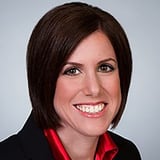Log in or create a free Rosenverse account to watch this video.
Log in Create free account100s of community videos are available to free members. Conference talks are generally available to Gold members.
Summary
In this talk, Kim Annex, leader of ZenDesk's product design organization, draws from over two decades of experience in distributed teams to explore the challenges and strategies of managing a global design team spanning eight countries and multiple time zones. Kim recounts early experiences with distributed work from the 1990s to today’s improved technological environment, highlighting how tools like video conferencing, Slack, and Google Docs enable better collaboration. She details ZenDesk's evolution from siloed product teams to an integrated Omni Channel approach, requiring greater cross-team collaboration and co-location. Kim stresses building trust through strong partnerships, aligning on shared values, and fostering open communication. She outlines tactical approaches such as asynchronous communication, setting clear responsibilities, limited routine global calls, and shared documentation to bridge distance. The talk also covers managing acquisitions, integrating new teams thoughtfully over time, and the importance of design specialists including design systems, research, and operations. Kim emphasizes the cultural diversity at ZenDesk and the role of off-sites and social time to build lasting bonds, while her leadership style prioritizes empowering creative technologists over just shipping products. The session concludes with insights on maintaining design quality through recurring critiques, co-located workshops, and adopting an experience-first mindset across products. Questions address remote work models, integration post-acquisitions, team structures, and how ZenDesk balances remote flexibility with a culture that values office presence.
Key Insights
-
•
ZenDesk’s product design spans eight countries with over 50 people, requiring complex coordination across 17-hour time zone differences.
-
•
The core of ZenDesk’s success lies in the Triad leadership model: product design, engineering, and business founders collaborating closely.
-
•
Acquisitions are managed with a hands-off first 100 days approach, focusing initially on IT and HR normalization before design integration.
-
•
Trust and strong partnerships underpin effective distributed team collaboration and are actively built through off-sites and social interactions like shared meals.
-
•
Asynchronous communication is critical; ZenDesk employs shared docs, Slack, and staggered meetings to accommodate global time zones.
-
•
Design systems at ZenDesk evolved into a product managed collaboratively by designers and engineers, crucial for cross-product consistency.
-
•
Cultural empathy is actively cultivated, recognizing that ZenDesk’s offices have highly diverse populations often not native to their office location country.
-
•
Leaders and team members share explicit communication about their work styles, hours, and availability to respect boundaries and maximize overlap.
-
•
Global design critiques and leadership reviews are scheduled by time zones with asynchronous commenting to maintain design quality.
-
•
ZenDesk fosters a shift from siloed product thinking to an experience-first mindset considering cohesive multi-product user journeys.
Notable Quotes
"Nothing can get done without fostering and building trust."
"Sharing meals is a really critical part of building trust which seems kind of strange but breaking bread together makes a difference."
"Design is really a team sport, and we are investing in specialists to help with design systems, operations, research, and content strategy."
"Instagram is so important for me to see what my team is doing outside of work; it builds stronger bonds."
"We have a Chief Creative Officer who leads design but also brand and workplace experience, giving design a seat at the executive table."
"Asynchronous communication means you’re not going to get an answer quickly, and you have to embrace that."
"We set expectations for who is owner and who is contributor in asynchronous work so decisions can move forward."
"The telephone game scenario happens with distributed teams all the time and when that happens, customers suffer."
"We try to limit routine global calls and break large meetings into three regional meetings so people don’t have to join at impossible hours."
"I don’t want people to do a 6 AM call — I can do a 10 PM call to brainstorm but not a design critique."
Or choose a question:
















More Videos

"There was a feeling at Brex that research was sometimes conducted for the sake of research, not resulting in impactful insights."
Ned Dwyer Emily Stewart James WallisThe Intersection of Design and ResearchOps
September 24, 2024

"Design Ops in government requires a lot of diplomacy – it’s about managing relationships and stakeholder expectations."
Michael LandEstablishing Design Operations in Government
February 18, 2021

"It took competitors over seven years to catch up to where Apple is with voice dictation and accessibility."
Sam ProulxTo Boldly Go: The New Frontiers of Accessibility
November 18, 2022

"We run our UX department as a business, with responsibilities, requirements, and expectations."
Vasileios XanthopoulosA Top-Down and Bottom-Up Approach to User-Centric Maturity at Scale
January 8, 2024

"Balance UX and CX—making the site work technically is not enough if the content or experience isn’t meaningful."
Andrew Custage Michael MallettThe Digital Journey: Research on Consumer Frustration and Loyalty
March 29, 2023

"Remote, unmoderated usability studies give designers feedback in less than a day."
Marjorie Stainback Kelsey KingmanTransforming Strategic Research Capacity through Democratization
October 24, 2019

"75% of cross-functional teams are dysfunctional because silos perpetuate themselves, even in cross-functional teams."
Alla WeinbergCross-Functional Relationship Design
December 6, 2022

"Caring for people emotionally during insight sessions directly impacts their productivity and willingness to engage."
Jerome “Axle” BrownHow to Use Self-Directed Learning to Ensure Your Research Insights are Heard and Acted Upon
March 11, 2021

"They’re really flexible and listen to our feedback, even though we’re a large company."
Jen Crim Jess Quittner Saritha Kattekola Alex Karr Gurbani PahwaCulture, DIBS & Recruiting
June 11, 2021
















